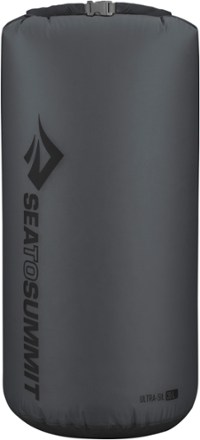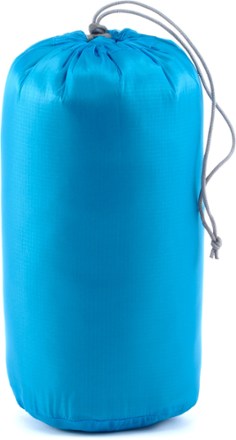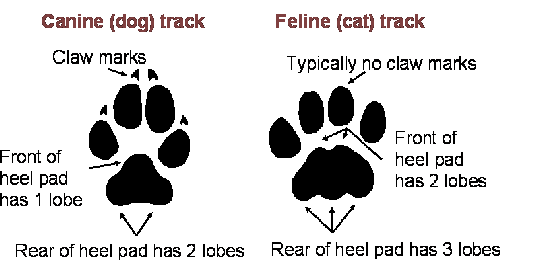 And by "metal objects" I mean such things as firearms, ammunition, and knives.
And by "metal objects" I mean such things as firearms, ammunition, and knives.What brought the subject to mind was this article I ran across, where a cache of weapons -- firearms, ammo, explosives, and fuses, hidden for German spies and saboteurs behind Soviet lines -- was found in Latvia. Seventy years later and there is no rust and no corrosion; it all looks ready to use.
In their case, the weapons were properly greased up and wrapped, and everything was sealed in airtight containers. (No mention if there was any kind of desiccant included to absorb any moisture.) By keeping the air and wet outside, the inside stayed dry and clean.
So if you store things properly, they can last a long time.
What 'Proper' Storage Means Nowadays
I'd start with a 4" or 6" diameter PVC pipe, and caps. That stuff won't corrode in any reasonable situation you can think of.
- Use standard PVC cement on one end and glue a cap on.
- Insert your contents.
- Cement the other cap.
- Bury it.
Storing Firearms
First you must clean them. After that, you've got choices:
Then stick it in a plastic bag -- I'd suggest one of the heavier freezer/storage-types -- and squeeze out all the air you can as you seal it. For longer times, or to make absolutely sure that your gun or ammo is protected, we have a very handy item: vacuum food-storage machines and bags. This uses a heavy plastic designed to keep food from losing moisture in the freezer over long periods, and usually holds up very well. Several brands out there use either pre-made plastic bags or a roll of the material for custom sizes: you use the unit to seal one end, put your stuff inside, then vacuum out the air and seal the other end.
If you want to be double-extra sure, grease the firearm up before putting it in the bag, and add some desiccant as well before you vacuum and seal. I've not tried it with a gun or ammo, but I once took a knife blade, gave it a light coat of oil, sealed it in a bag, and buried it in the garden for (as I recall) two months. It came out with not a spot of corrosion.
Storing Ammunition
- For short-term storage, or something you might have to dig up/dig out and use in short order, give them a coat of a good gun oil.
- For long-term storage, use grease or cosmoline. Just about any quality grease should do, and bearing grease from a auto-parts store doesn't cost much.
Then stick it in a plastic bag -- I'd suggest one of the heavier freezer/storage-types -- and squeeze out all the air you can as you seal it. For longer times, or to make absolutely sure that your gun or ammo is protected, we have a very handy item: vacuum food-storage machines and bags. This uses a heavy plastic designed to keep food from losing moisture in the freezer over long periods, and usually holds up very well. Several brands out there use either pre-made plastic bags or a roll of the material for custom sizes: you use the unit to seal one end, put your stuff inside, then vacuum out the air and seal the other end.
If you want to be double-extra sure, grease the firearm up before putting it in the bag, and add some desiccant as well before you vacuum and seal. I've not tried it with a gun or ammo, but I once took a knife blade, gave it a light coat of oil, sealed it in a bag, and buried it in the garden for (as I recall) two months. It came out with not a spot of corrosion.
Storing Ammunition
No grease or oil here! You need plastic bags and desiccant (something to absorb any moisture in the bag). There are lots of commercial products out there that work well, or you can make your own:
Update: Thanks to a reader, said article has been found: Bury a gun and ammo for 15 years
Concealment
- Get a piece of drywall (the stuff used in houses).
- Cut a 2" x 3" piece for a gallon-size bag.
- Clean up the edges so it doesn't shed bits.
- Bake it in the oven for a few hours at low heat to completely dry it out.
- Put in bag with ammo and seal.
Update: Thanks to a reader, said article has been found: Bury a gun and ammo for 15 years
Concealment
If you bury something of this sort, you need some kind of way to make sure you can find it again. That can be a map, GPS coordinates, things like that. Each of these has plus and minus points, and Mas addresses some of them in his article. Keep in mind that if it's easy for you to get to, then it's easy for someone else to find!
Making it harder for someone else to find your cache could be done by putting it in a place that would mess with metal-detection and ground-penetrating radar gear. One or both could really be messed with by simply burying metal in random places; people getting hits all over have to decide where to dig. I'm not really up on GPR systems, but I'm pretty sure that using one to try to find a buried gun is not a 'fly a helicopter over the area and look for hits' thing.
Make sure it's well-hidden, but not so hard to get to that you can't when you need it:
If you decide to bury a PVC pipe, do so vertically to minimize its signature. Dig a hole so that the PVC's top is top three feet below the surface, and make sure you give yourself plenty of room around the sides as well; as the ground settles, it'll lock the pipe tightly into place, so if you want to remove the whole thing you'll need working space around the hole -- so don't bury it in cramped quarters!
*I read the article once, and I really wish I had it now.
Making it harder for someone else to find your cache could be done by putting it in a place that would mess with metal-detection and ground-penetrating radar gear. One or both could really be messed with by simply burying metal in random places; people getting hits all over have to decide where to dig. I'm not really up on GPR systems, but I'm pretty sure that using one to try to find a buried gun is not a 'fly a helicopter over the area and look for hits' thing.
Make sure it's well-hidden, but not so hard to get to that you can't when you need it:
- It has to actually be hidden, whether inside a structure or buried.
- It has to be somewhere that risk of accidental discovery is minimized.
- It has to protect the contents from moisture and air.
- You actually have to be able to find it again.
- You actually have to be able to get it out.
If you decide to bury a PVC pipe, do so vertically to minimize its signature. Dig a hole so that the PVC's top is top three feet below the surface, and make sure you give yourself plenty of room around the sides as well; as the ground settles, it'll lock the pipe tightly into place, so if you want to remove the whole thing you'll need working space around the hole -- so don't bury it in cramped quarters!
*I read the article once, and I really wish I had it now.




















